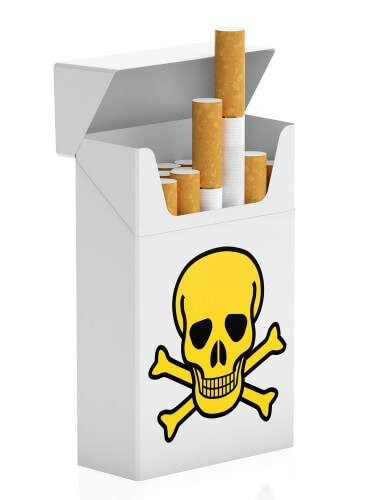A new study found that it is possible to predict the long-term risk of causing cancer from exposure to a given chemical by measuring the short-term effects of that exposure. The findings could enable the development of simpler and cheaper tests designed to test chemicals for their potential as cancer risk factors.

[Translation by Dr. Nachmani Moshe]
A new study found that it is possible to predict the long-term risk of causing cancer from exposure to a given chemical by measuring the short-term effects of that exposure. The findings could enable the development of simpler and cheaper tests designed to test chemicals for their potential as cancer risk factors.
A new study found that it is possible to predict the long-term risk of causing cancer from exposure to a specified chemical by measuring the short-term effects of that exposure. The findings have long been published in the scientific journal PLOS ONE. Despite a general decrease in the rate of incidence and mortality from cancer, approximately forty percent of US residents will be diagnosed with the disease during their lifetime, and approximately twenty percent of them will die as a result of it. Today, only less than two percent of the chemicals sold on the market have been tested for being cancer risk factors.
Using an experimental model, researchers from the School of Medicine and School of Public Health at Boston University measured the effects of exposure to a given chemical for several days on healthy tissue and evaluated the effects this exposure would have on gene expression in the liver. "By comparing the effect we measured to the effect of known carcinogens and known non-carcinogenic substances, we were able to determine a "signature" and develop an appropriate predictive model capable of distinguishing between the two cases with a high degree of accuracy," explained lead researcher Stefano Monti, associate professor of medicine at Boston University. "Furthermore, by examining the collection of corresponding genes that activate the response to the given chemical, we were able to focus on the potential mechanisms responsible for the development of a cancerous tumor," noted the lead researcher.
The chemicals tested include, among others, dioxin, a highly toxic environmental pollutant known to cause a host of medical problems in humans, including cancer; polychlorinated biphenyls (PCBs), a family of compounds linked to increased rates of skin, brain and liver cancers; and the substance bisphenol A (BPA), a component of plastics and epoxy resins, which have hormone-like properties. Despite the prohibition of the sale of many products that include these compounds, especially in the USA, they are still common in the environment.
Apart from the predictive value of the test, the lead researcher points out that researchers want to know and understand how these compounds actually cause cellular changes that lead to the development of cancer. He adds and points out that it is still unclear whether the short-term changes in the genes - as observed in the laboratory - will indeed eventually and necessarily lead to the development of a cancerous tumor.
According to the researchers, there is a growing understanding that the role played by environmental pollutants in the development of cancer in humans has not been sufficiently studied and that more formal approaches are needed regarding the examination of the biological consequences of prolonged exposure to pollutants. "Our work confirmed the hypothesis that the long-term risk of cancer can be predicted by measuring the short-term effects of the suspected chemical," explained the lead researcher. "We expect that as a result of our findings, accurate and cost-effective screening methods will soon be developed to assess the carcinogenic (cancer-causing) potential of more than 80,000 chemicals currently in use on the commercial market."
